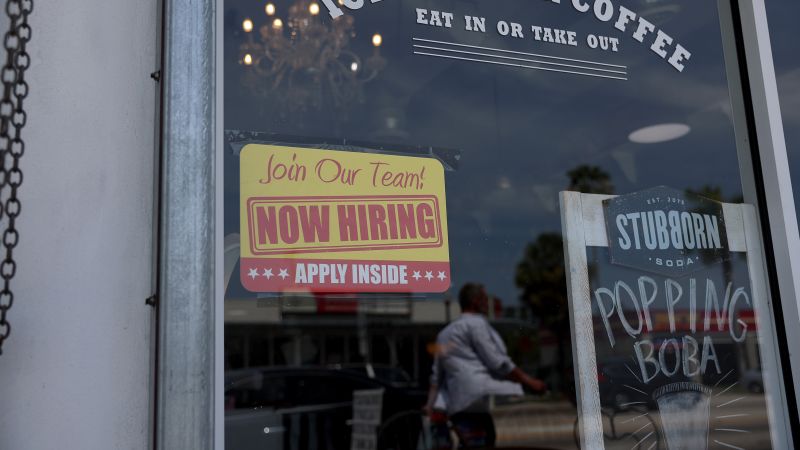US payroll growth in the year through March may have been weaker than originally reported, with estimates suggesting there were 500,000 fewer jobs than previously stated, potentially impacting the Federal Reserve's decision on further rate hikes.
The U.S. Bureau of Labor Statistics has revised down its tally of total employment in March 2023 by 306,000, indicating that there were about 300,000 fewer job gains during April 2022 to March 2023 than initially estimated, which could impact the Federal Reserve's decision on interest rates.
The number of job openings in the US fell to 8.8 million at the end of July, indicating a slowing economy, with declines seen in professional and business services, healthcare, and state and local government sectors, while the information industry and transportation saw increases in job openings. Additionally, consumer confidence dipped in August as Americans grew more concerned about rising prices of gas and groceries, and home prices continued to increase in June.
U.S. job openings reach lowest level in nearly 2.5 years in July, signaling a slowdown in the labor market and potential impact on interest rates.
The trend of hefty pay increases for new hires is reversing, with the average posted pay for more job titles declining rather than increasing so far this year, according to data from ZipRecruiter, indicating a potential end to a brief golden age of wage growth for job seekers.
Job creation in the US slowed in August, indicating that the strong economy could be starting to weaken under pressure from higher interest rates. Private employers added 177,000 jobs, well below the previous month's total of 371,000. Pay growth also slowed, suggesting more sustainable growth as the effects of the pandemic recede. Investors and economists remain uncertain about the future of US inflation and whether the economy can continue to grow without a significant slowdown.
Private employers in the U.S. added fewer jobs than expected in August, indicating a slowdown in the labor market and suggesting that the rapid job growth seen in recent years is no longer sustainable.
The US economy added 177,000 jobs in August, slightly below expectations, but indicating sustainable growth in pay and employment as the effects of the pandemic diminish.
U.S. job growth is slowing down but remains steady, with the unemployment rate settling at 3.5% in July and predictions that the August jobs report will show similar results, although concerns remain regarding potential slowdowns and negative growth.
Job creation in the American labor market is expected to slow down in August, with the addition of approximately 170,000 jobs, reflecting a mild cooling of employment growth and wage growth, as well as the impact of higher interest rates on hiring; the recent strikes in the film industry, although not a significant direct employer, are likely to have some impact on the jobs numbers, particularly those related to on-set production and support roles.
The US added more jobs than expected in August, but the unemployment rate increased, while average hourly earnings and nonfarm payrolls growth were slightly below forecasts.
The US added 187,000 jobs in August, but the unemployment rate rose to 3.8 percent, indicating a plateau in the labor market as the Federal Reserve considers another interest rate hike.
Despite over 16,000 job cuts in Texas this year, the state continues to experience job growth and is projected to gain 1.3 million new jobs by 2027, with industries such as professional services, healthcare, and manufacturing leading the way.
The US job market added 187,000 jobs in July, returning to pre-pandemic levels and indicating a gradual cooling off of the labor market, with positive economic news and a steady unemployment rate of 3.5%.
The US job market remains resilient despite lower-than-expected job growth in July, with the unemployment rate dipping to 3.5% and more Americans entering the job market, easing pressure on employers to raise wages.
American workers are facing a decline in median annual household income due to high inflation, with 17 states experiencing a decrease while only five saw an increase, according to data from the Census Bureau. The labor market remains challenging, with wages rising but not enough to keep up with inflation.
The number of job layoffs in the U.S. remains near a record low despite rising interest rates and high inflation.
